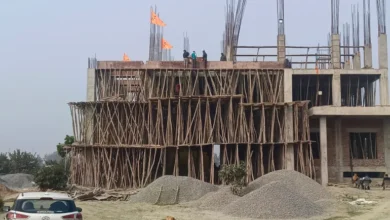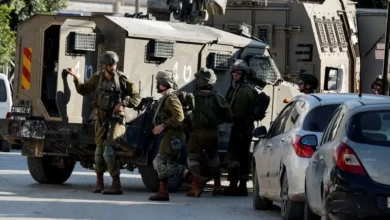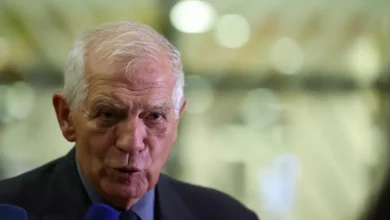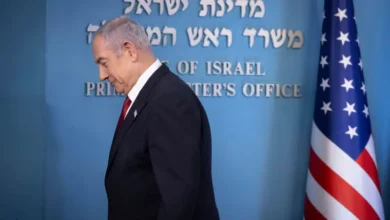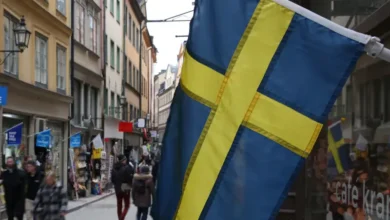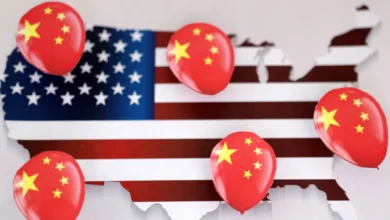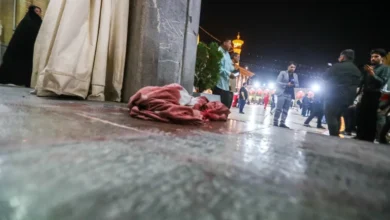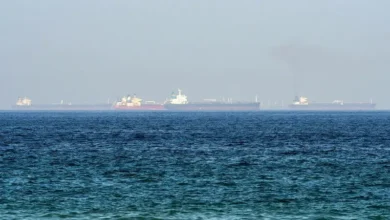The Indigenous ‘watchmen’ safeguarding Peru’s isolated tribes
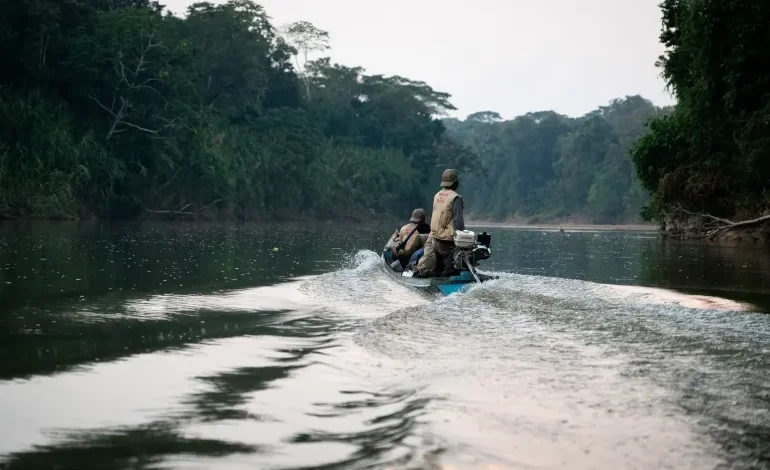
On an overcast afternoon in April, Nolasco Torres and Freddy Capitan navigate their canoe along a jungle-veiled ravine. Along the route, they scrutinise the creeping understory for footprints and broken branches – telltale signs of the imminent return of isolated tribes in this cutoff region.
After rounding a bend, they steer their boat towards Nueva Vida, a tiny Indigenous hamlet hidden within Peru’s eastern Amazon, some 100 kilometres (62 miles) from the Brazil border.
“When this ravine dries, they’ll make contact here,” Torres says. “Summer is coming. We have to make sure our communities are prepared.”
Torres, 47, and Capitan, 33, are Indigenous Huni Kuin fathers and community leaders. They are also friends and neighbours of Nueva Vida’s 30 villagers. But they are not here to pay a social call.
Wearing khaki vests stitched with the letters “PIACI” (Indigenous Peoples in Isolation and Initial Contact), they are among 50 government-contracted, predominantly Indigenous protection agents working for Peru’s Ministry of Culture. Their work has brought them to the Curanjillo Ravine, an epicentre of recent contact.It was here, last August, during the annual droughts, when more than two dozen isolated Mastanahua suddenly appeared at the edge of Nueva Vida, naked and clutching bows and arrows. Alarmed villagers stood back as the group approached their homes, grabbing machetes, buckets and food before retreating along the dried-out ravine, back into the forest.The tense interaction ended without violence. However, in recent years, a series of explosive encounters between isolated tribes and villagers in this remote region has generated an undercurrent of panic. As the annual dry season nears, remote streams will soon recede, setting tribes out in search of resources closer to larger, more populated rivers where contact with villages is increasing.
“We’re begging the state to intervene,” said Nueva Vida’s leader, Rafael Montes, 30, in April. “We sleep in fear at night. Our only defence is our shotguns.”
Torres and Capitan grimace at this allusion to violence. The state’s emergency protocols around these incidents instruct villagers to withdraw, remain calm and make a distress call to protection agents. However, these villages tend to lack secure refuge and means to contact assistance, which makes following the instructions almost impossible.
In June, two months after Torres and Capitan’s April meeting with villagers in Nueva Vida, a group of approximately 30 Mastanahua reappeared along the dry ravine and made a similar incursion into the village. This time, Montes and his entire community fled.
Today, Nueva Vida stands abandoned. Its homes, crops and small primary school are slowly being reclaimed by the jungle.
‘In tremendous crisis’
In the heavily forested province of Purus, in the eastern Amazon rainforest, contact with some of the planet’s most isolated tribes is accelerating. The encounters are transforming the region into a troubling flashpoint of encounters with the Mastanahua and Mashco Piro tribes, which have rejected contact with the outside world for generations.
The situation is creating a powder keg, raising the spectre of deadly confrontation and driving the evacuation of entire villages. It has also prompted questions about the Peruvian state’s commitment to safeguarding the lives of some of Earth’s last isolated tribes amid increased invasion of their territory.
The factors driving the tribes into contact are multifaceted. Experts say extractive industries, criminal economies and climate change are pushing them closer to villages, where they are exposed to various risks, including armed confrontation and contagion.
“The region is in tremendous crisis,” said Beatriz Huertas, an anthropologist who works closely with Indigenous peoples and Amazon organisations. “Illegal logging and drug trafficking is happening in their territory, and the state is not fulfilling its role to guarantee their sovereignty.”
While Peruvian law acknowledges the territorial rights of isolated peoples, it also allows for natural resource exploitation – even within protected areas – if deemed to be a “public necessity.” This allows logging and fossil fuel explorations to operate inside Indigenous reserves, and, in the absence of state protection, drug smugglers move through these areas.
Disrupted habitat
Peru is home to the second-largest population of isolated tribes on the planet after Brazil. Approximately 7,500 people from about 25 ethnic groups live in isolation or are in the early stages of contact with settled society.
Often erroneously characterised as “lost” tribes, living lives “frozen in the distant past”, isolated peoples have interacted with outside populations for generations, Huertas explained. As a result, Indigenous people “faced illness, violence and death”, she added. But following enslavement and the decimation of their populations, including during the rubber boom from the 1890s to the 1920s when Peruvian rubber was in high demand, many groups fled to remote headwaters, where their relatives remain today. “These are peoples who isolate themselves as a survival strategy,” she said.
The greater Purus region, which extends eastward into neighbouring Brazil, is considered to be home to the largest concentration of isolated tribes on Earth. The Alto Purus National Park – an area more than half the size of Costa Rica – along with two protected reserves, serves as a migratory corridor for the Mashco Piro, the largest-known isolated tribe in the world, numbering more than 750 people, and about 300 Mastanahua, who share ethnolinguistic ties with the Huni Kuin and other settled tribes in Purus.
‘We are like watchmen’
Travelling upstream from Nueva Vida, Torres and Capitan enter another canopied ravine. Water levels are beginning to recede. They wade through the shin-deep water sifting for arrowheads or trails suspiciously blocked by branches. They also listen: Isolated peoples can be masterful imitators of wild game and monkeys.
“We are like watchmen,” said Torres. “We find fire pits, charred animal bones and palm huts they put up along beaches. It’s our job to report the evidence to authorities.”
Increased contact by isolated tribes in remote Amazon regions like Purus has led Peru’s government to recruit local Indigenous villagers like Torres and Capitan to work as protection agents.
Their innate knowledge of the forests, along with an ability to communicate government protocols in their native languages, has made protection agents’ work a vital tool for the state – both to monitor their territories and keep villagers alert should they encounter evidence of isolated tribes nearby.
